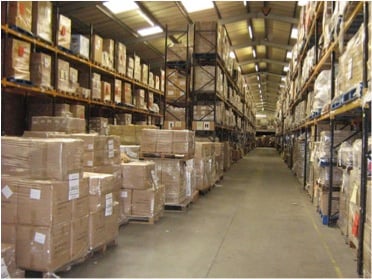When attempting to understand the best form of production for your manufacturing facility, there are a few different forms of production processes that your facility can utilize. This could be assemble-to-order (ATO), engineer-to-order (ETO), make-to-order (MTO), and make-to-stock (MTS). These production processes vary greatly based off of the product and capability within your facility.

While assemble-to-order and engineer-to-order are very common forms of production processes that need to be considered, the most prevalent two are make to order and make to stock. These production processes are utilized by the majority of manufacturing facility due to the form of demand that many consumers are used to. Within this blog we are going to discuss the main differences between these two forms of production processes and which process is the most ideal for your manufacturing operation.
Difference Between Make-to-Order and Make-to-Stock
The main differences between make to order and make to stock pertain to the following:
- Make-to-Order (MTO): Make-to-order pertains to the process of having orders generated through actual consumer demand and then producing that order for the individual customer that ordered it. Many companies adopt this approach when the production process does not have a substantial amount of time, which usually pertains to products that can be either assembled rather quickly or can be produced within a short period of time. One of the primary benefits of MTO is that is enables companies to manufacture products that could be customized to consumer specifications, which falls in the lines of engineer-to-order (ETO). This production strategy can aid with striving for zero inventory and eliminating waste within your operation. However, while many MTO environments strive to have a rather quick manufacturing process, it still may take longer and have longer lead times than utilizing make-to-stock (MTS), considering that you still have to wait for the product to be manufactured. For example, if a car was to be make-to-order - you would be waiting weeks or even months for the car to be assembled. This is why utilizing a MTO environment needs to have the parts readily available and able to be assembled rather quickly to ensure that consumer orders are fulfilled in the timeframe requested.
- Make-to-Stock (MTS): Make-to-stock involves producing or manufacturing goods based on anticipated consumer demand. Products are stocked for future sales that haven’t taken place at the time of production and are ready to be distributed from a warehouse or distribution center. Make to stock also utilizes forecasts and real-time data to aid with producing the correct amount of product and ultimately reducing waste within the facility. Make-to-stock is definitely the idea form of production for items that have rather long lead times and take a substantial amount of resources to produce, such as an automobile. While make-to-stock is by far one of the most common forms of production, it has drawbacks as well. The main shortcoming pertaining to MTS is relying on forecasting and building up substantial amounts of inventory. Inventory is almost always considered wasteful and ultimately needs to be eliminated in order to be considered “lean”, which is a major drawback of MTS.
A software that can greatly aid with MTS and MTO methods of production pertains to PlanetTogether’s Advanced Planning and Scheduling (APS) Software. APS Software is a must for manufacturing facilities that are seeking to take their operation to the next level and ultimately eliminate waste and increase profitability. MTS and MTO production processes are key when attempting to enhance efficiency and ensure that you are maintaining a competitive edge within the industry. PlanetTogether’s Advanced Planning and Scheduling (APS) Software is a must for modern-day manufacturers.
Advanced Planning and Scheduling Software
Advanced Planning and Scheduling (APS) software has become a must for modern-day manufacturing operations due to customer demand for increased product mix and fast delivery combined with downward cost pressures. APS can be quickly integrated with a ERP/MRP software to fill gaps where these system lack planning and scheduling flexibility and accuracy. Advanced Planning and Scheduling (APS) helps planners save time while providing greater agility in updating ever-changing priorities, production schedules, and inventory plans.
- Create optimized schedules balancing production efficiency and delivery performance
- Maximize output on bottleneck resources to increase revenue
- Synchronize supply with demand to reduce inventories
- Provide company-wide visibility to capacity
- Enable scenario data-driven decision making
Implementation of Advanced Planning and Scheduling (APS) software will take your manufacturing operations to the next level of production efficiency, taking advantage of the operational data you already have in your ERP.
Related What If Video
APS Resources
Topics: Make to Stock, make to order




















LEAVE A COMMENT